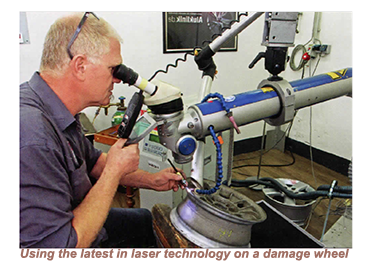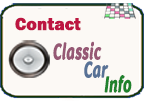
Maintaining the wheels on a classic car is important for ensuring safe driving and preserving the overall condition of the vehicle. Here are some steps you can take to maintain the wheels on your classic car:
![]() to clean classic caewheels, and then hand-dry them with a soft towel. Some commercial wheel soaps and cleansers, both for use at home and in car washes, contain caustic or acidic compounds that harm the wheels. Wash as frequently as necessary to get rid of brake dust and other road filth before it builds up on the wheels.
to clean classic caewheels, and then hand-dry them with a soft towel. Some commercial wheel soaps and cleansers, both for use at home and in car washes, contain caustic or acidic compounds that harm the wheels. Wash as frequently as necessary to get rid of brake dust and other road filth before it builds up on the wheels.
![]() Inspect the wheels for any visible signs of damage, such as bends, cracks or dents. Damaged wheels can cause vibrations, uneven tire wear and can be dangerous.
Inspect the wheels for any visible signs of damage, such as bends, cracks or dents. Damaged wheels can cause vibrations, uneven tire wear and can be dangerous.
 When a wheel rim becomes out of shape for any reason, it will lead to issues in other directions particularly erratic tire pressure, which will significantly impact the steering and performance of the vehicle.
When a wheel rim becomes out of shape for any reason, it will lead to issues in other directions particularly erratic tire pressure, which will significantly impact the steering and performance of the vehicle.
Damage to a wheel usually stands out, with the only exception if the vehicle has been fitted with oversized metal or plastic hubcaps ,in which case it will be more difficult to detect damage to the wheel. As part of a regular maintenance programme, all of hubcaps need to be removed, and the tire and wheel inspected to check for any damage.
 With the hubcaps removed, each one of your tires should be closely examined, especially if there are any areas with obvious damage or deformation to your wheel. If there is, it needs to be repaired and straightened, or replaced if there is serious damage.
With the hubcaps removed, each one of your tires should be closely examined, especially if there are any areas with obvious damage or deformation to your wheel. If there is, it needs to be repaired and straightened, or replaced if there is serious damage.
 Tires are designed to fit flush inside the wheel. When the wheel is bent and pulls away from the tire, it can cause air leaks, or even press against the rubber and cause a flat.
Tires are designed to fit flush inside the wheel. When the wheel is bent and pulls away from the tire, it can cause air leaks, or even press against the rubber and cause a flat.
Either way a visit to a local service centre to have the damaged wheel inspected and any repairs carried out , should be done, and without too much delay.
 Ensuring that the lug nuts are tightened to the correct torque is among the most important practices in maintaining car wheels and ensuring the safety of the driver and passenger.
Ensuring that the lug nuts are tightened to the correct torque is among the most important practices in maintaining car wheels and ensuring the safety of the driver and passenger.
Wheel torque requires adjusting the lug nuts on the wheels to ensure that they are neither too tight nor too loose.
Individual car models have their own manufacturer-recommended torque specifications. These specifications define the exact level of torque advised per wheel, calculated to fit the weight and displacement of the vehicle as well as the dimension of the bolt or stud holding the wheel in place.
In addition to needing to be tightened to manufacturer specifications, it is also important to observe the precise order in which the lug nots should be tightened.
 For the inexperienced, the order in which lug nuts are tightened may seem unimportant, and many have paid an unfortunate price in choosing what appears the most obvious option of tightening each nut in a clockwise circle.
For the inexperienced, the order in which lug nuts are tightened may seem unimportant, and many have paid an unfortunate price in choosing what appears the most obvious option of tightening each nut in a clockwise circle. A mistake that will set a wheel “off-balance”, could have a dramatic effect on ride quality at best and even lead to brake rotors becoming seriously warped.
Overtightening lug nuts not only make it more than make it difficult to remove them later, it can also lead to stripped threads, or even break off the bolt itself.
 If the wheel torque is too loose, the wheel will begin to wobble and might even fall off while the vehicle is in motion.
If the wheel torque is too loose, the wheel will begin to wobble and might even fall off while the vehicle is in motion.
![]() Make sure that the wheel bearings are properly lubricated and in good working condition. If the bearings are worn, they should be replaced.
Make sure that the wheel bearings are properly lubricated and in good working condition. If the bearings are worn, they should be replaced.
![]() Consider applying a protectant or a wheel sealant to the wheels to protect them from dirt and grime and make them easier to clean in the future.
Consider applying a protectant or a wheel sealant to the wheels to protect them from dirt and grime and make them easier to clean in the future.
It's important to keep in mind that classic cars may have different types of wheels than the modern cars. Regular inspection and maintenance can help extend the life of your classic car's wheels and can avoid costly repairs in the future.
Back to the homepage- and don't spare the horsepower.
ub4





